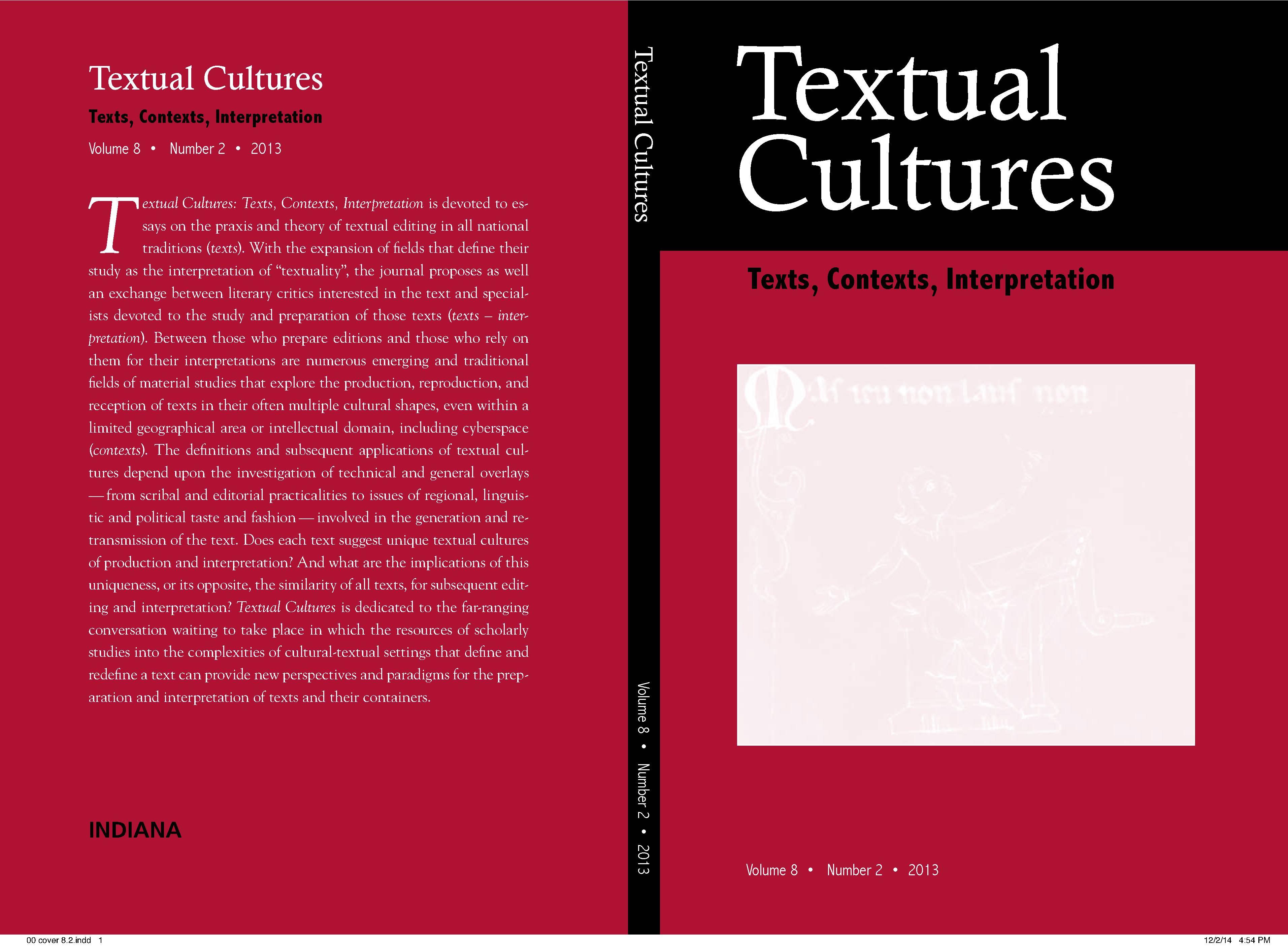A Critical Edition of Ezra Pound’s Pisan Cantos: Problems and Solutions
Main Article Content
Abstract
Downloads
Article Details
Authors who publish with this journal agree to the following terms:
- Authors retain copyright and grant the journal right of first publication with the work simultaneously licensed under a Creative Commons Attribution License (see:http://creativecommons.org/licenses/by/3.0/us/) that allows others to share the work with an acknowledgment of the work's authorship and initial publication in this journal.
- Authors warrant that their submission is their own original work, and that they have the right to grant the rights contained in this license. Authors also warrant that their submission does not, to the best of your knowledge, infringe upon anyone's copyright. If the submission contains material for which an author does not hold the copyright, authors warrant that they have obtained the unrestricted permission of the copyright owner to grant Indiana University the rights required by this license, and that such third-party owned material is clearly identified and acknowledged within the text or content of their submission.
- Authors are able to enter into separate, additional contractual arrangements for the non-exclusive distribution of the journal's published version of the work (e.g., post it to an institutional repository or publish it in a book), with an acknowledgment of its initial publication in this journal.
References
Byron, Mark. 2003. “‘This Thing that Has a Code + Not a Core’: The Texts of Pound’s Pisan Cantos”. Ezra Pound and Referentiality. Edited by Hélène Aji,225–38. Paris: Presses de l’Université de Paris-Sorbonne.
Cornell, Julien. 1966. The Trial of Ezra Pound. New York: The John Day Company.
Eastman, Barbara. 1979. Ezra Pound’s Cantos: The Story of the Text 1948–1975. Orono: National Poetry Foundation.
Maharaj, Ayon. 2010. “Why Poetry Matters: The Transpersonal Force of Lyric Expe-rience in Ezra Pound’s The Pisan Cantos”. Arizona Quarterly 66.4: 71–92.
Olson, Charles. 1975. Charles Olson and Ezra Pound, An Encounter at St. Elizabeths. Edited by Catherine Seelye. New York: Grossman Publishers.
Pound, Ezra. 1948. The Pisan Cantos. New York: New Directions.
———. 1949. The Pisan Cantos. London: Faber and Faber.
———. 1969. Confucius: The Great Digest, The Unwobbling Pivot, The Analects. New York: New Directions.
———. 1999. Letters in Captivity, 1945–1946, edited by Omar Pound and Robert Spoo. New York: Oxford University Press.
———. 2003. The Pisan Cantos. Edited by Richard Sieburth. New York: New Direc-tions.
Taylor, Richard. 1996. “Towards a Textual Biography of The Cantos”. In Modernist Writers and the Marketplace. Edited by Ian Willison, Warwick Gould, and War-ren Chernaik, 223–57. Basingstoke: Macmillan Press.
———. 1997. “The History and State of the Texts”. In A Poem Containing History: Textual Studies in The Cantos. Edited by Lawrence S. Rainey, 235–66. Ann Arbor: University of Michigan Press.
Witemeyer, Hugh. 1969. The Poetry of Ezra Pound: Forms and Renewal, 1908–1920. Berkeley: University of California Press.
